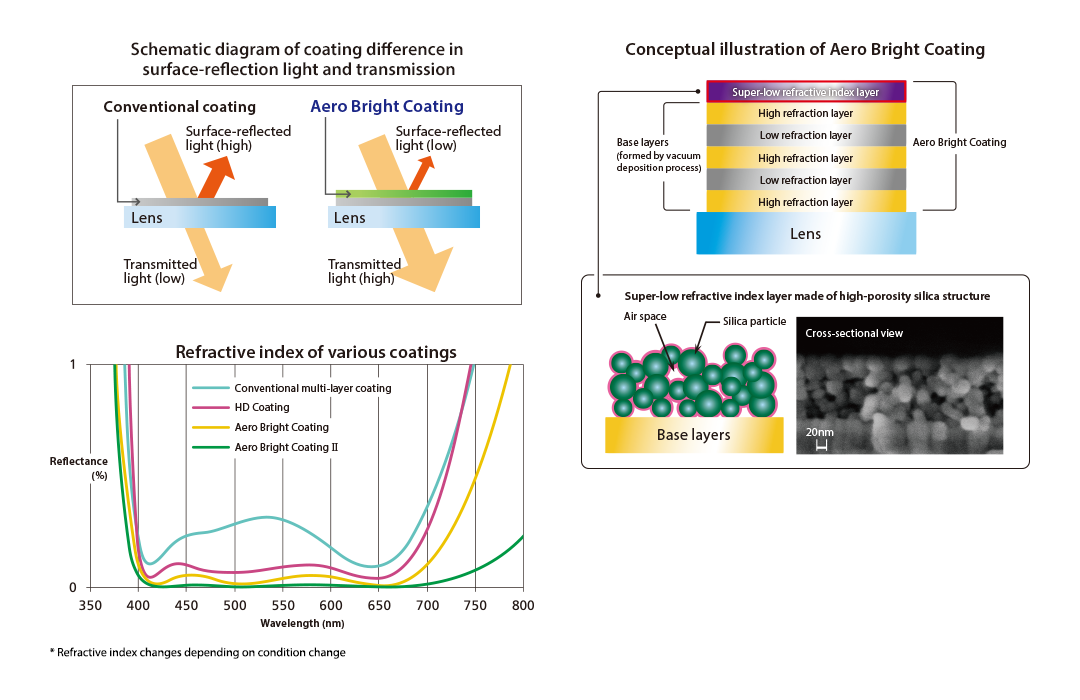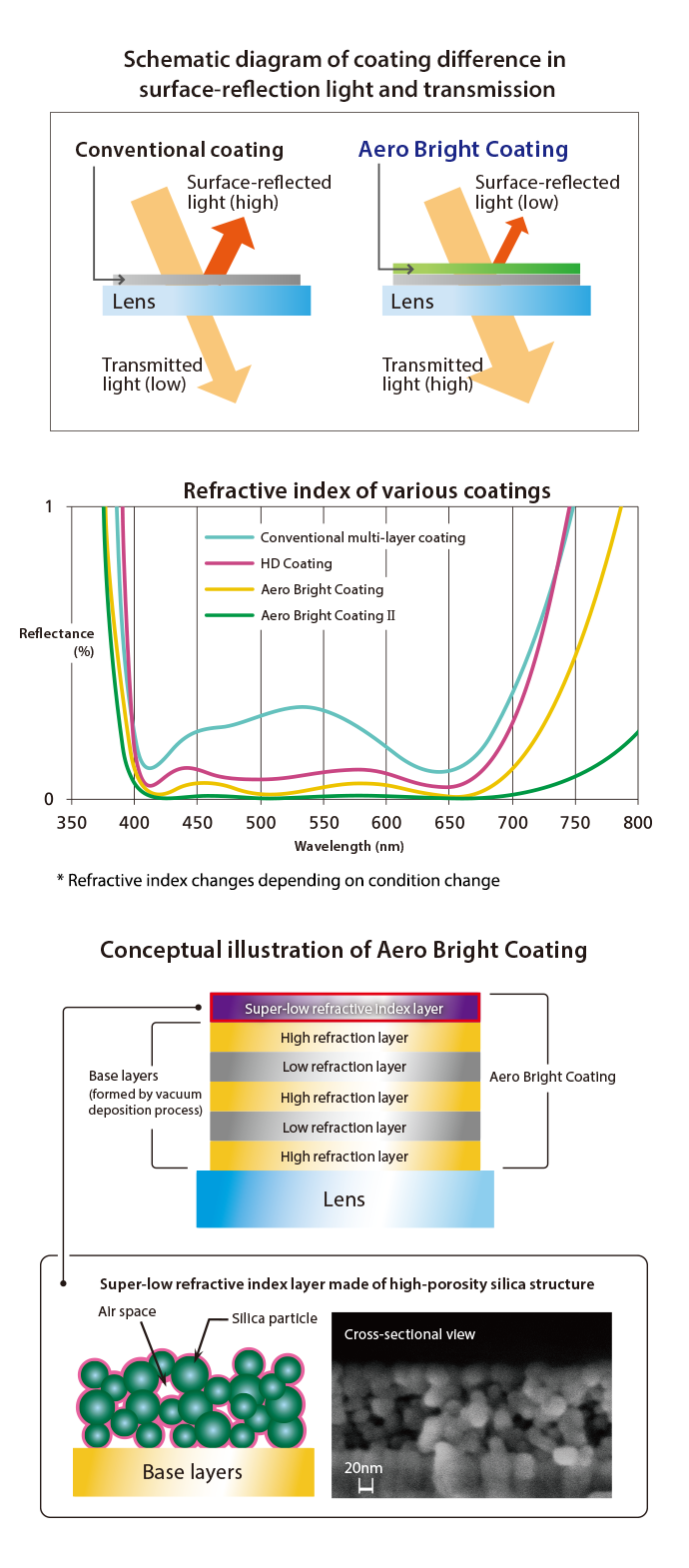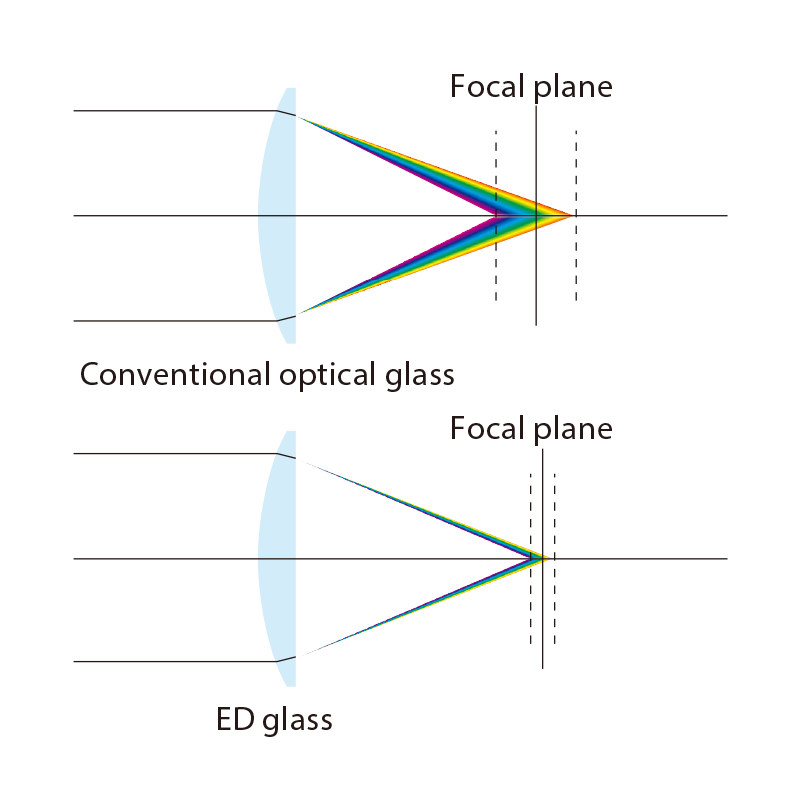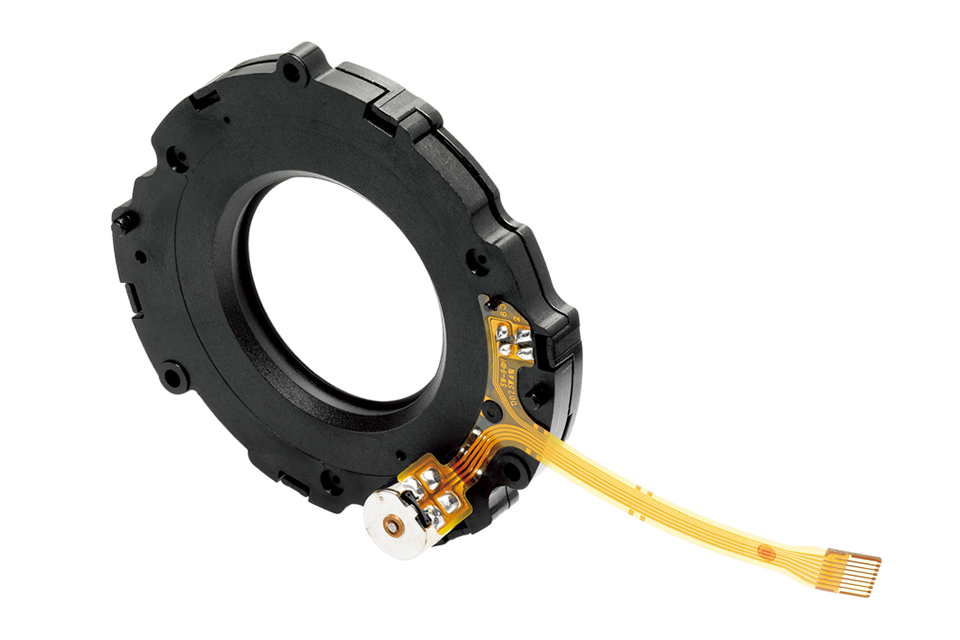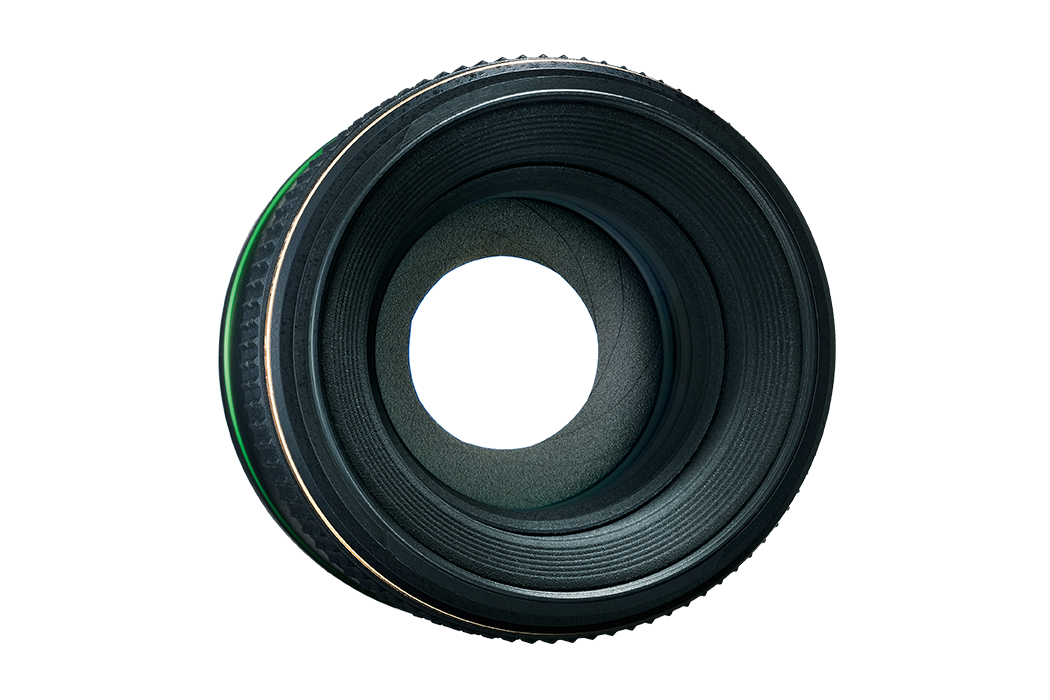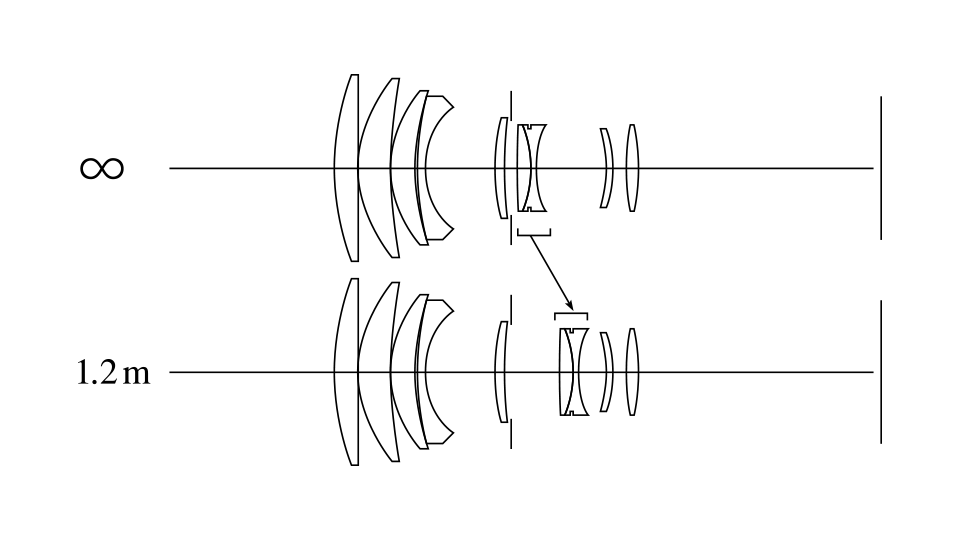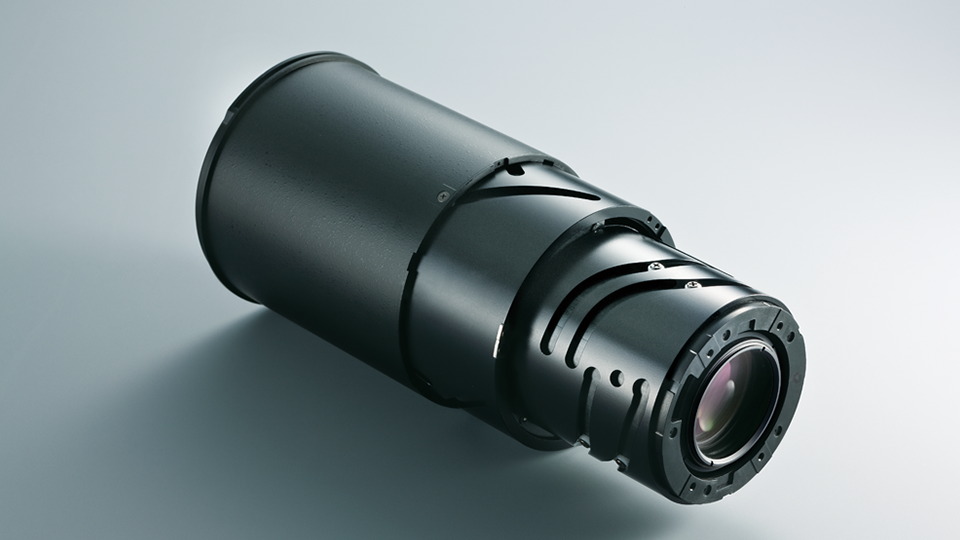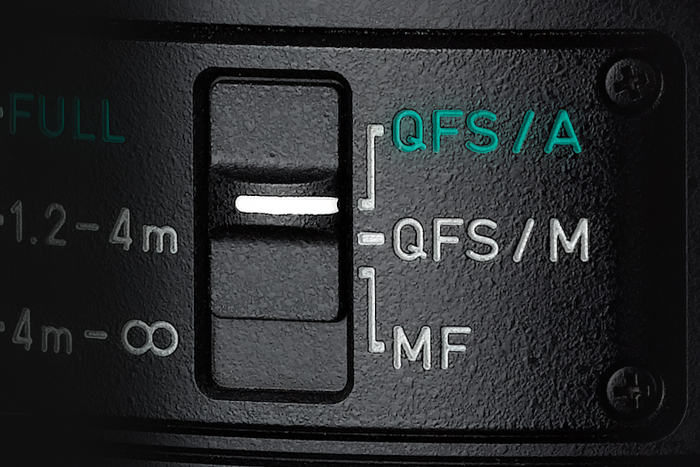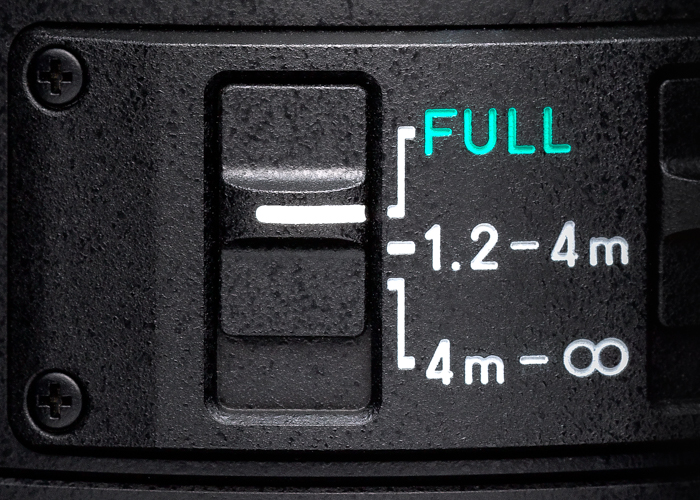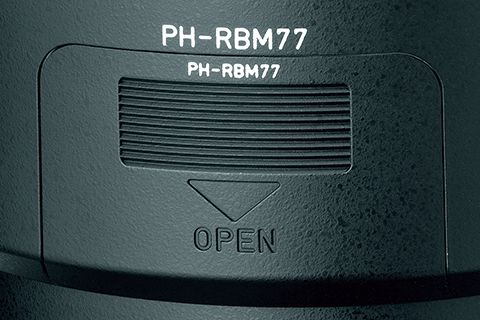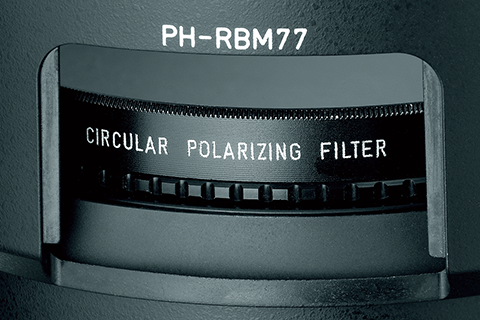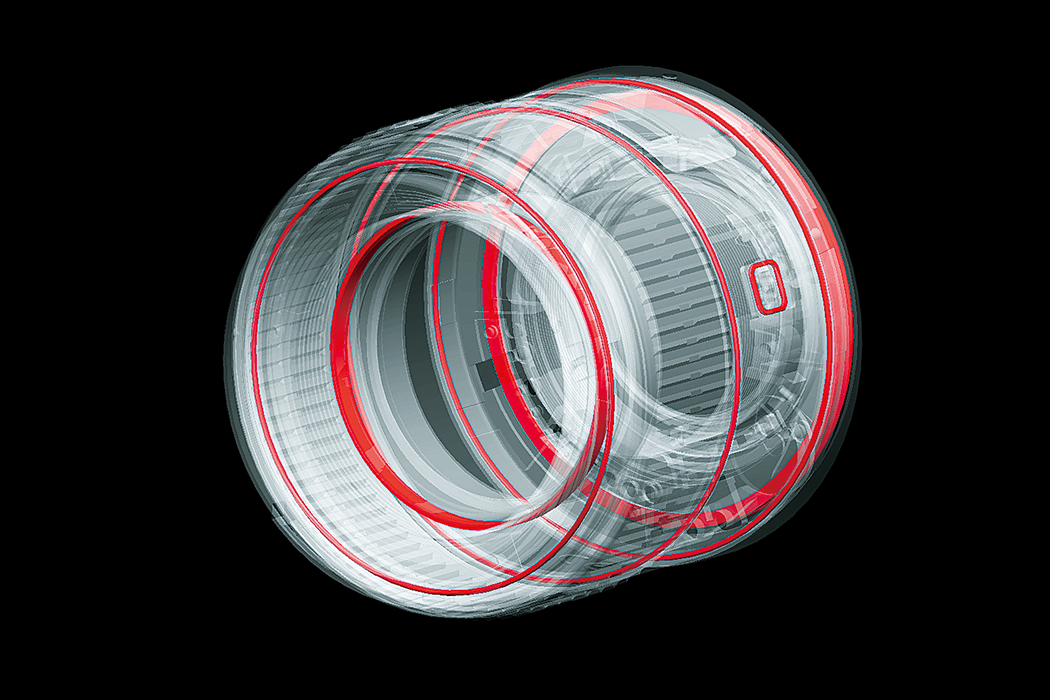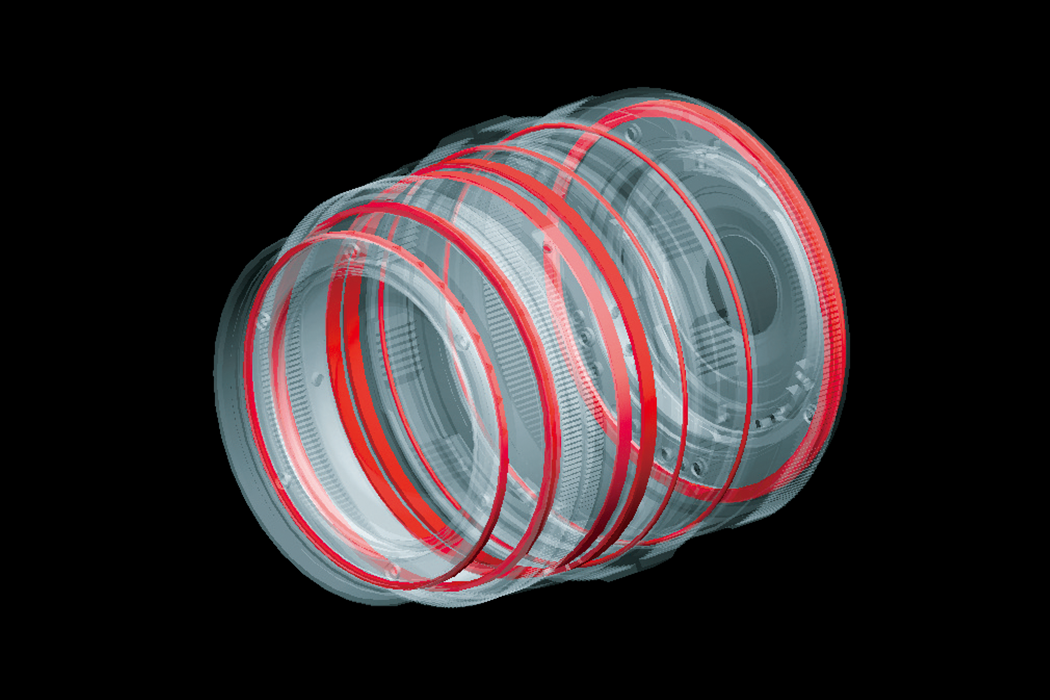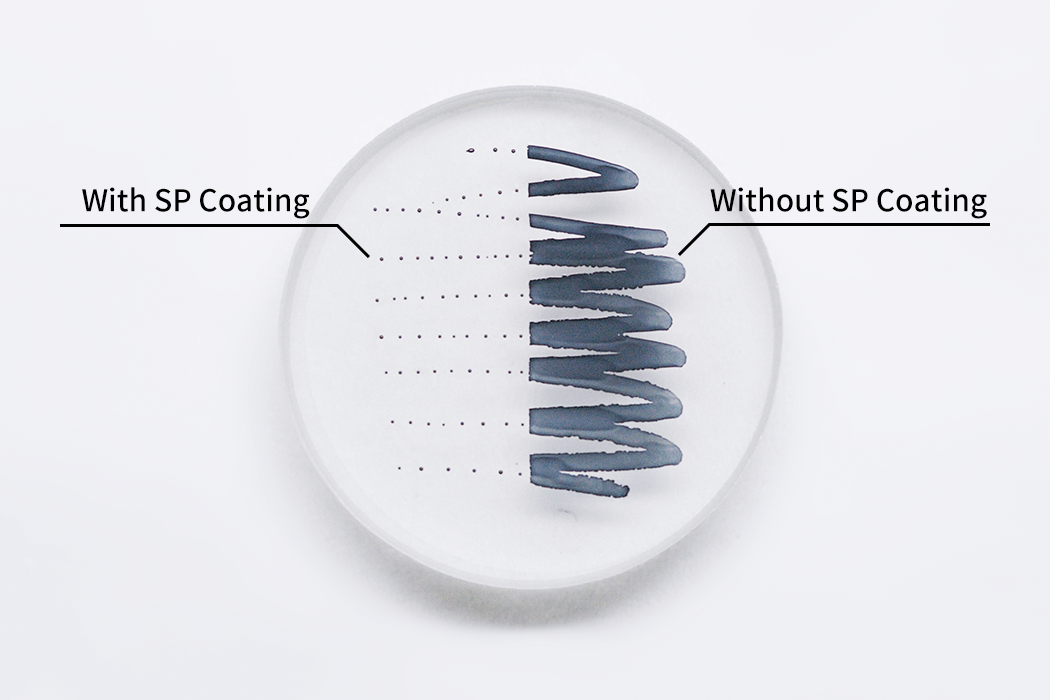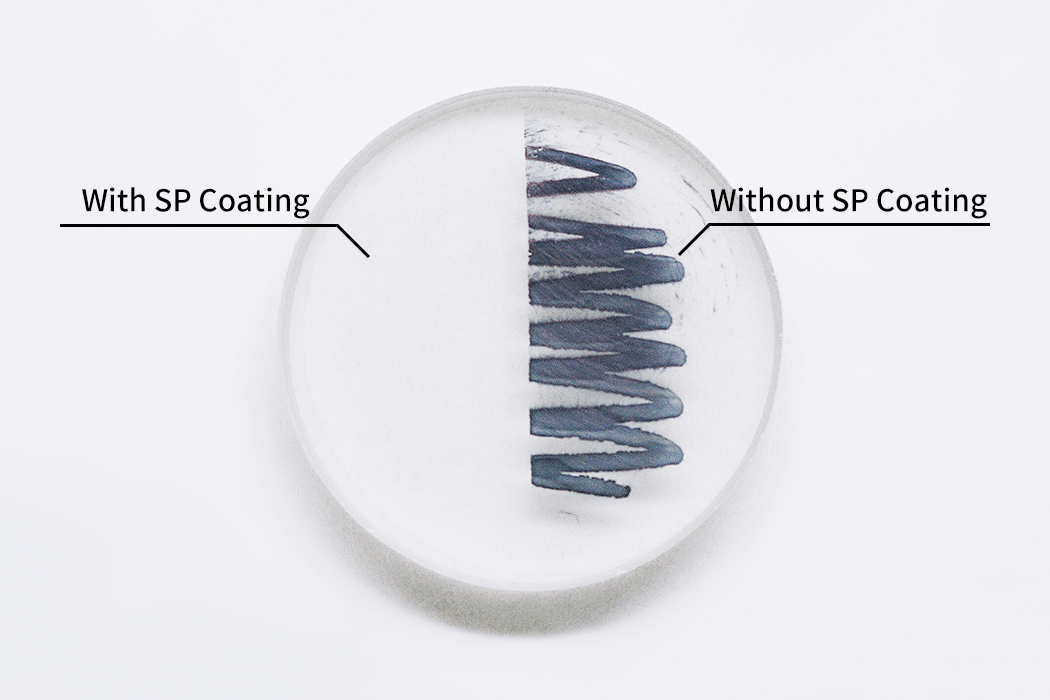
Aero Bright Coating II / Aero Bright Coating
Aero Bright Coating is a new layer formation process based on nanotechnology. It applies a silica aerogel coating layer with a uniform porous structure over a regular multi-layer coating. By trapping low-refraction air between stablesilica nanoparticles, it forms a super-low refraction, high-transparency coating. It also drastically reduces surface reflections, while minimizing flare andghost images. With Aero Bright Coating II, by increasing the amount of air trapped in the silica aerogel layer, this process successfully form a super-low reflaction coating superior to that of the original Aero Bright Coating. By considering the lens characteristics, selected coating is adopted to achieve optimum performance.
